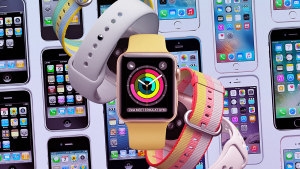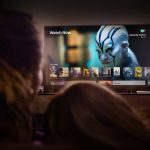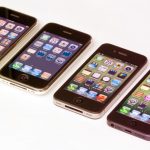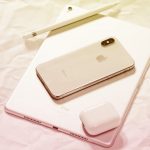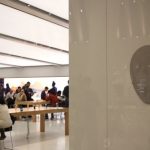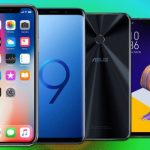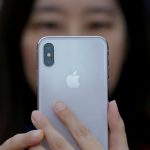Apple’s September 12 Event May Mark A Turning Point For iPhone, Apple Watch
At its fall event on Tuesday, Apple is set to announce some new phones, a new smartwatch, and an updated video streaming set-top box. That’s a lot for any product announcement, but there’s an added momentousness to today’s event—these particular devices may each mark a major shift in the direction of their respective lines, as well as a transformation of the ecosystems they center.
We’ll likely see a new (and expensive) iPhone that recognizes faces, an Apple Watch that includes its own connection to the internet, and a refreshed Apple TV that teems with compelling content. Altogether, these evolutions may give us a new perspective on Apple’s mojo on the 10th anniversary of Steve Jobs’s finest creation (the iPhone).
It seems fitting that the event will take place in the Steve Jobs Theater on Apple’s brand-new campus in Cupertino, California. The show starts at 10 a.m. PT/1 p.m. ET on Tuesday, September 12. Apple will stream the event. Fast Company will host a live blog that day, and Harry McCracken and I will be at the event to provide live coverage and commentary.
The Phones
This year marks the 10th anniversary of the iPhone, and by most accounts, we’re likely to see the launch of a genre-busting phone to celebrate the occasion. Apple had a big hit with the iPhone 6 (when the screen got much bigger), but the subsequent releases have yielded less blockbuster power. After the release of the iPhone 7 last year, some pundits and consumers believed Apple was saving up some tasty new features for the anniversary phone. There may have been some truth to that. (Though it must be said that the iPhone 7 Plus, with its dual cameras, was both a leap forward for the phone and a success in the marketplace.)
According to the leaks, the 10th-anniversary phone could change the way we interact with smartphones. There will likely be some new lasers and sensors on the phone, most notably on the front for facial recognition. Since there’s reportedly no physical home button on the device (possibly replaced by a software bar at the bottom of the interface), the facial recognition sensor may be the phone’s main method for authenticating the user, replacing TouchID.
There’s also a chance that another 3D laser system will show up on the back of the new phone, which would not only be used for auto-focus but for augmented reality apps. Apple’s augmented reality framework, ARKit, is part of the forthcoming iOS 11, and last spring the company released to developers the tools needed to create AR apps to run on the iPhone. An additional 3D laser on the back of the phone would allow the apps to place digital imagery within the real-world view of the camera more accurately and realistically. If the laser (probably supplied by Lumentum) does not show up in the anniversary phone, we’ll see it in one of next year’s phones.
The new phone is also likely to include wireless charging, a large edge-to-edge OLED screen, glass on front and back, and additional waterproofing. It may also come with a high price tag, starting at around $1,000.
Even the name of the phone remains a mystery. Many have been calling it the iPhone 8, but we doubt that’s the name of the new phone. More likely, it will be called the iPhone X Edition or something like that.
The iPhone 8 name may be handed down to the other two phones Apple is expected to announce. They also might be called the iPhone 7s and 7s Plus, which would be consistent with the typical line of succession from the iPhone 7 and iPhone 7 Plus release last fall.
The success of the iPhone 7 Plus raises the hope that both of the new updates, which are supposed to conform to the 4.7 inch and 5.5 inch screen sizes, will each have dual cameras. At the very least the new pair of phones will get a boost in processing power and possibly an improvement to their screens.
Always Connected Watch
Analysts believe the Apple Watch, in its first two years, very likely outsold the iPhone in its two years (Apple doesn’t break out Watch sales numbers). iPhone sales really started to blow up in its fourth year on the market. But the coming year might be such a leap forward for the Apple Watch. Here’s why:
The Apple Watch has so far relied on its paired iPhone for its internet connectivity. That might be about to change. It’s rumored that Apple is about to unveil its Apple Watch Series 3, and one version of the Watch will have an LTE chip inside for cellular connectivity. This could liberate the Watch from the phone and might truly change the way Watch apps work. It would become possible to stream music and receive notifications while you’re out running or biking. Real time health monitoring might become possible. Some people might actually start wearing their Watch every day, and leave their iPhone at home some days.
The Watch has seen some real success after Apple repositioned from an all-purpose smartwatch to a fitness device. Apple Watch sales have been accelerating over the past year as more buyers have passed up fitness trackers for full-blown smartwatches. But the addition of a cellular connection might swing that back the other way. The Watch will remain a fitness device, but fitness might not be the Watch’s main selling point. With its own connectivity, some people may begin to regard the Watch as a Swiss army knife that’s useful in lots of scenarios throughout the day. The new cellular connection may enhance the Watch’s ability to keep us from fixating on our phones so much.
OS Updates (The AR Cometh)
We got a good view of Apple’s newest operating systems iOS 11, watchOS 4, macOS High Sierra, and tvOS at the company’s event last spring. However we may get some new information about them now that the hardware showcasing them is being announced.
For instance, Apple added the new ARKit augmented reality framework to iOS 11, and released a software development kit to developers in the spring. So we are likely to see some of the work of those developers, and Apple itself, in new AR apps running on the new 10th-anniversary iPhone.
We also know that Apple Pay in iOS 11 will support Venmo-style person-to-person payments, so we may see some demos of that in various use cases.
iOS 11 includes lots of things for productivity on the iPad. Split screen multitasking modes have been redesigned and enhanced. A new application dock at the bottom of the interface (which looks a lot like the one in macOS) lets the user easily launch various apps into individual sections of the screen. Apple may demo some new iPad apps that exploit the new features.
As for watchOS 4, Apple may show off some of the new health and fitness integrations, like the Watch’s new ability to connect with commercial gym equipment. We may see demos of some new health products (like heart rate monitors or blood sugar monitors) that take advantage of the new direct Bluetooth connection with the Watch.
Apple TV Refresh
It’s been two years since Apple TV got a major refresh, and now’s the time. The rumor mill has said that the biggest new feature of the new device will be the ability to stream 4K and HD video. “4K” video fits 4,000 pixels on a single line across the TV screen. TVs that support the standard have as many as 8 million pixels in all, which can create a super-sharp and colorful image. The new Apple TV is said to contain a larger processor to get the job done smoothly.
Apple has been focusing on Siri functionality in the Apple TV, because it believes, rightly, that voice control is a far better experience than trying to find and view content using a physical remote. So we may see some cool new Siri tricks for TV in the living room.
Apple said at its last event that the Amazon Prime Video for Apple TV would be coming in the fall. We may see some of that, but we’ll hopefully hear about new streaming content resulting from rumored Apple negotiations with major studios. Apple has had success marketing the hardware part of its TV vision, but has found that offering a bundle of channels at a reasonable price is hard to do.
More On That HomePod Thing
When Apple trotted out its new HomePod smart speaker at its developer conference in June, it didn’t provide a lot of detail about how the device would operate within the company’s various ecosystems. We’re likely to get more details on that on Tuesday, and hopefully learn when the device will finally go on sale.
As I have written, HomePod could play a central role in the connected home as the central natural language interface to all kinds of home appliances. Sure you can already talk to the Home app using Siri running on iPhones and iPads, but the HomePod will hear a lot better and allow you to speak out commands as if you were talking to your house.
We’re likely to see more about how Siri on the HomePod controls music. And we may see demos of Siri commands to HomePod talking to other platforms like CarPlay or HealthKit.
Those are likely the major pieces of Apple’s announcements. Of course, there’s bound to be a few surprises along the way; it’s just a question of how big they are. Even without any, Tuesday’s event–with the new phones, the new Watch, and a refreshed Apple TV–could end up being Apple’s biggest product announcement in quite some time.
Tune in tomorrow at 10 a.m. PDT/1 p.m. EDT to follow our live coverage of Apple’s September 12 event.
Fast Company , Read Full Story
(27)

